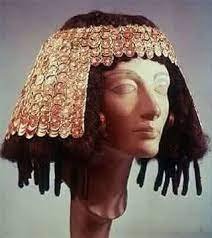The 411 On Hair You Wear
If you’ve found your way here, you probably are on the fence about wether or not extensions are right for you. There’s one simple answer: don’t knock it until you’ve tried.
There is generally one main difference between the differing methods of extensions, and that is how it is attached. Before we dive into the deep end of hairpieces and their characteristics, one must ask the question … why do humans wear faux hair?
The wearing of wigs dates from the earliest recorded times; it is known, for example, that the ancient Egyptians shaved their heads and wore wigs to protect themselves from the sun and that the Assyrians, Phoenicians, Greeks, and Romans also used artificial hairpieces at times. Over 3,000 years ago, Egyptians created iconic hair pieces used for various reasons, using real human hair. They also created wigs from materials like palm leaf and wool fibers. Both men and women, and everyone in-between, manufactured head covering of real or artificial hair worn in the theatre, as personal adornment, disguise, or symbol of office, or for religious reasons.
Fast-forward to the 1600’s, wigs gained popularity as a fashion statement by monarchs. Courtiers and nobles soon began to copy the royal trends and the fashion trickled down to the merchant class. Now, back then the average price of a basic wig was twenty-five shillings, which was about a week’s wage for a common Londoner. This made the fashion unattainable for all but the wealthy. The term “bigwig” originated at this time - British nobility would spend upwards of 800 shillings on elaborate hairpieces! Only the rich and powerful could afford the “big wigs” as a display of their status and wealth.
Until the 1950s, wigs were primarily handmade. Machines developed in Hong Kong made mass-produced hairpieces more accessible, and as a result, American women became more open about the use of wigs as a fashion choice. Black stars such as Diana Ross were known for their stylish wig collections in the mid-1960s. It was not really until the late 1960s that wigs underwent a massive renaissance in white hairdressing practices. Rapidly changing fashion, a space-age chic and the vogue for drip-dry clothes in new man-made fabrics led to a vogue for the artificial over the natural. By 1968 there was a wig boom and it is estimated that one-third of all European women wore what hair-dressers called a "wig of convenience."
In the late twentieth century, many false forms of hair are used and the change from a long to a short hair-style can be completed at a whim with extensions that have moved from black hairdressing to white hairdressing. Performers such as Jennifer Lopez, Beyoncé and Britney Spears use weaves of all styles and colors openly.
So you see, it’s not historically uncommon or really even impractical to wear faux hair for a reason, a season, or forever. Sometimes, your dream hair is created by an artist and delivered to you by hand; is there truly anything more royal treatment than that?
If you’re toying with the idea of having a perfect hair day every day, I’d suggest you book a consultation and see just how far your dream hair could take you.
XOXO Principesa and Ciao for now,
-M



